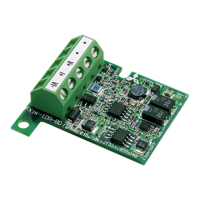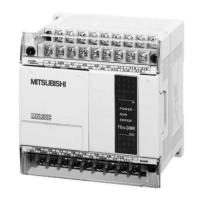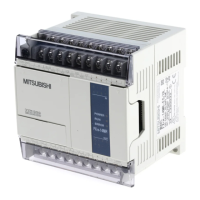xi
9. Assigning System Devices....................................................................9-1
9.1 Addressing Extension Modules ...........................................................................9-1
9.2 Real Time Clock Function ...................................................................................9-2
9.2.1 Setting the real time clock .........................................................................................9-2
9.3 Analog Expansion Boards ...................................................................................9-4
9.3.1 FX1N-1DA-BD...........................................................................................................9-4
9.3.2 FX1N-2AD-BD......................................................................................................... 9-11
10.Points Of Technique...........................................................................10-1
10.1 Advanced Programming Points .........................................................................10-1
10.2 Users of DC Powered FX2N Units ....................................................................10-1
10.3 Using The Forced RUN/STOP Flags.................................................................10-2
10.3.1 A RUN/STOP push button configuration .................................................................10-2
10.3.2 Remote RUN/STOP control ....................................................................................10-3
10.4 Constant Scan Mode .........................................................................................10-4
10.5 Alternating ON/OFF States................................................................................10-4
10.6 Using Battery Backed Devices For Maximum Advantage .................................10-5
10.7 Indexing Through MultipleDisplay Data Values.................................................10-5
10.8 Reading And Manipulating Thumbwheel Data ..................................................10-6
10.9 Measuring a High Speed Pulse Input................................................................10-6
10.9.1 A 1 msec timer pulse measurement........................................................................10-6
10.9.2 A 0.1 msec timer pulse measurement.....................................................................10-7
10.10Using The Execution Complete Flag, M8029 ...................................................10-7
10.11Creating a User Defined MTR Instruction .........................................................10-8
10.12An Example SystemApplication Using STL And IST Program Control.............10-8
10.13Using The PWM Instruction For Motor Control ...............................................10-15
10.14Communication Format...................................................................................10-18
10.14.1Specification of the communication parameters:..................................................10-18
10.14.2Header and Terminator Characters...................................................................... 10-19
10.14.3Timing diagrams for communications:..................................................................10-20
10.14.48 bit or 16 bit communications.............................................................................. 10-23
10.15PID Programming Techniques........................................................................10-24
10.15.1Keeping MV within a set range............................................................................. 10-24
10.15.2Manual/Automatic change over ............................................................................ 10-24
10.15.3Using the PID alarm signals ................................................................................. 10-25
10.15.4Other tips for PID programming............................................................................10-25
10.16Additional PID functions..................................................................................10-26
10.16.1Output Value range control (S3+1 b5).................................................................. 10-26
10.17Pre-tuning operation .......................................................................................10-27
10.17.1Variable Constants ...............................................................................................10-27
10.18Example Autotuning Program.........................................................................10-28
10.19Using the FX1N-5DM Display module. ...........................................................10-29
10.19.1Outline of functions............................................................................................... 10-29
10.19.2Control devices for 5DM .......................................................................................10-30
10.19.3Display screen protect function............................................................................. 10-30
10.19.4Specified device monitor.......................................................................................10-31
10.19.5Specified device edit.............................................................................................10-32
10.19.6Automatic Backlight OFF......................................................................................10-33
10.19.7Error display enable / disable ...............................................................................10-33
11. Index..................................................................................................11-1
11.1 Index..................................................................................................................11-1
11.2 ASCII Character Codes.....................................................................................11-9
11.3 Applied Instruction List ....................................................................................11-10

